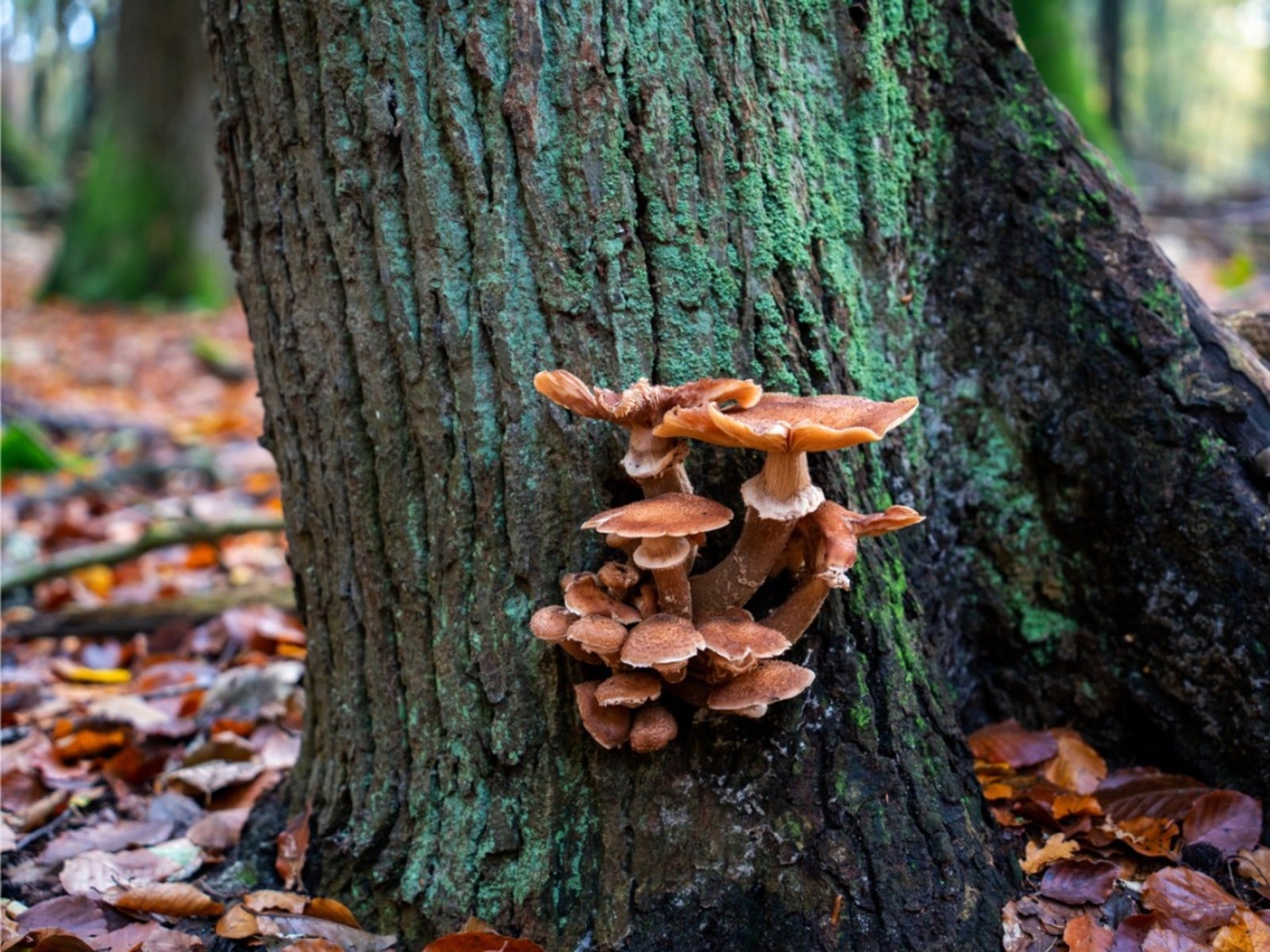Common Types Of Tree Fungus


Is that grand tree sitting just next to the house a menace? Fungus on a tree might indicate that it is. It is important that homeowners, arborists, and landscapers recognize the signs when a particular tree may present a hazard. There are different types of fungi on trees, so tree fungus identification is the first step.
Fungus That Grows on Trees
Fungus is used as a synonym for mushrooms, but mushrooms are actually the fruiting structures of the fungi. Most gardeners have observed mushrooms growing on trees. Is this dangerous? It can be, especially when it is widespread.
If your tree has fungal fruiting structures on several limbs, you will want to consider removing the tree if it’s in a location where property damage may occur or where people or pets could be struck by falling limbs or the falling tree.
If most of the tree appears healthy, any single branches with fungal fruiting structures should be removed promptly, regardless of the identity of the fungus present.
Tree Fungus Identification
Some people know about wild mushrooms and the extremely critical nature of correct fungus identification. Identifying tree fungus is critical, as well. While some fungi grow on trees without damaging them, several tree fungal types can cause destructive decay in tree trunks and limbs. In fact, under conditions that favor fungus growth, fungi can decay extensive portions of the wood of a tree in months. The destructive fungus can cause heart rot, sap rot, or canker rot. These can undercut the strength of the wood as well as destroy storage and conductive tissues in the sapwood.
Types of Fungus that Grow on Trees
It’s easiest to talk about different species of fungus by genus.
- Those fungi belonging to the genus Armillaria cause root rot or shoestring root rot on trees. Look for fleshy, firm, honey-colored mushrooms that form in clusters. The caps can be up to 6 inches (15 cm) in diameter, while the stem can be 1 inch (2.5 cm) in diameter and up to 6 inches (15 cm) long. There are around 270 species of Armillaria. If you notice these or similar ones on your tree, call in an arborist to identify the problem mushroom and advise you.
- Another type of dangerous tree fungus is Ganoderma lucidum. This fungus can be recognized by its shelf-like structure and reddish brown mushrooms with a cream margin. This one causes root rot. Ganoderma applanatum looks very much like it, and causes butt rot, or decay at the base, on many species of trees.
- Inonotus dryadeus is a fungus particularly dangerous to oaks. It can cause root and butt rot, toppling trees before any obvious symptoms are noted. Infected trees can experience branch dieback and yellowing leaves. It mostly shows up at the base of trees as a lumpy, yellowish mass.
- Laetiporus sulfureus is remarkable for its massive clusters of bright yellow to orange shelf-like fruiting structures that turn white with age. Infected trees easily break in the wind even before the fungus begins to form fruiting structures.
Gardening tips, videos, info and more delivered right to your inbox!
Sign up for the Gardening Know How newsletter today and receive a free copy of our e-book "How to Grow Delicious Tomatoes".

Teo Spengler is a master gardener and a docent at the San Francisco Botanical Garden, where she hosts public tours. She has studied horticulture and written about nature, trees, plants, and gardening for more than two decades. Her extended family includes some 30 houseplants and hundreds of outdoor plants, including 250 trees, which are her main passion. Spengler currently splits her life between San Francisco and the French Basque Country, though she was raised in Alaska, giving her experience of gardening in a range of climates.
-
 4 Superfast Composting Methods: Turn Waste Into Garden Gold In 30 Days Or Less
4 Superfast Composting Methods: Turn Waste Into Garden Gold In 30 Days Or LessTry the fastest composting methods to turbocharge your pile and transform kitchen scraps and garden waste into finished compost in just a few weeks.
By Mary Ellen Ellis
-
 Best Spider Plant Soil – Complete Soil Guide And Expert Tips For Keeping Plants Happy
Best Spider Plant Soil – Complete Soil Guide And Expert Tips For Keeping Plants HappySpider plants are fun and easy plants to grow, but what is the best soil for a spider plant? Selecting the right soil is important so they can thrive.
By Bonnie L. Grant